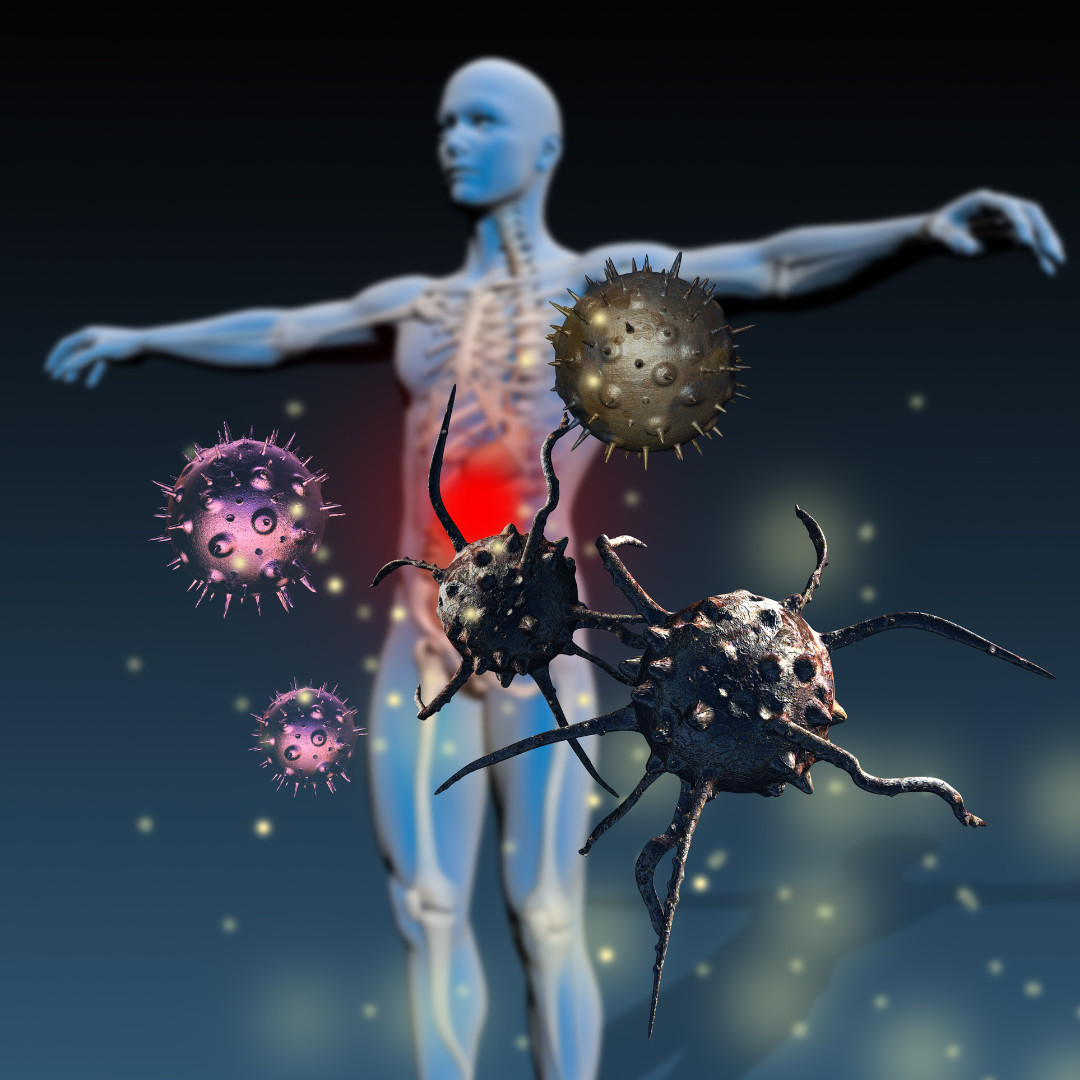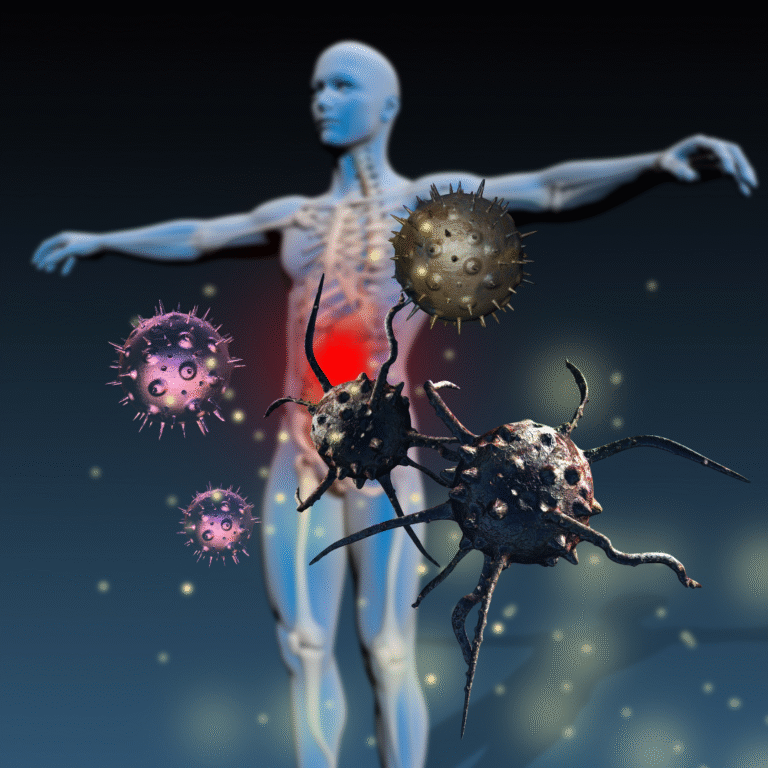A strong immune system is essential for defending the body against infections and illnesses. It is made up of a complex network of cells, tissues, and organs that work together to identify and destroy harmful pathogens.
The science behind a strong immune system lies in its ability to recognise threats quickly and mount an effective response while maintaining a balance to avoid damage to healthy cells. This balance depends on factors such as genetics, nutrition, sleep, and lifestyle.
Understanding how the immune system functions can provide practical insights into maintaining and improving overall health. Exploring these scientific principles helps reveal why some people resist illness better than others.
Core Scientific Principles of the Immune System
The human immune system relies on a complex interplay between structures, cells, and mechanisms to defend against pathogens. It applies both immediate and specialised responses to detect and neutralise threats.
Structure and Major Components
The immune system comprises primary components such as white blood cells, lymph nodes, and organs like the spleen and thymus. White blood cells include various types, such as neutrophils, macrophages, and lymphocytes, each performing specific roles. The bone marrow produces these cells, which circulate or reside in tissues.
Lymph nodes act as filtering hubs where immune cells communicate and mount responses. The thymus is essential for maturing T cells, crucial for adaptive immunity. This structural organisation enables the immune system to recognise and eliminate foreign invaders efficiently.
Functions of Innate Immunity
Innate immunity provides the body’s first line of defence by responding rapidly to pathogens. It involves physical barriers like the skin and mucous membranes, as well as cellular defenders, including neutrophils and macrophages. These cells detect common pathogen-associated molecular patterns (PAMPs) via pattern recognition receptors (PRRs).
Innate immunity eliminates invaders through phagocytosis, inflammation, and secretion of antimicrobial proteins. This response is non-specific and does not adapt or improve upon repeated exposures, but serves to delay infection, allowing time for adaptive immunity activation.
Adaptive Immunity and Memory
Adaptive immunity targets specific pathogens through the activation of B and T lymphocytes. B cells produce antibodies that bind to antigens, neutralising pathogens or marking them for destruction. T cells destroy infected cells or help coordinate other immune cells.
A key feature of adaptive immunity is memory. After initial exposure to an antigen, memory cells remain in the body, enabling faster and stronger responses upon re-exposure. This principle underlies vaccination and long-term immunity in immunology.
How the Immune System Responds to Threats
The immune system detects and eliminates harmful pathogens through a series of precise actions. It identifies invaders, activates specialised cells, and uses inflammation to control and heal affected areas.
Recognition of Pathogens
The immune system first recognises pathogens by detecting unique molecular patterns on their surface. Dendritic cells play a crucial role by capturing these foreign molecules and presenting them to T cells. This process alerts the adaptive immune system, enabling a specific response.
Pathogens like viruses and bacteria carry antigens that differ from the body’s own cells. B cells also detect these antigens and begin producing antibodies tailored to neutralise the specific invaders.
Immune Response Steps
Once pathogens are recognised, immune cells coordinate a response in stages. Initially, innate immune cells such as macrophages attack the intruders non-specifically.
Next, T cells multiply to target infected cells directly. Meanwhile, B cells generate antibodies that bind to pathogens, preventing their spread and marking them for destruction. This adaptive response is slower but highly specific, providing immunity against future infections.
Inflammation and Resolution
Inflammation is the immune system’s immediate reaction to infection or injury. It increases blood flow and recruits immune cells to the affected site, promoting pathogen clearance.
Chemical signals like cytokines intensify this process but also cause symptoms such as swelling and redness. After the threat is controlled, specialised cells help resolve inflammation, preventing tissue damage and restoring normal function.
Factors Influencing Immune System Strength
Immune system strength is shaped by multiple factors that interact in complex ways. These include inherited traits, external conditions, and medical interventions that can enhance or modulate immune responses.
Genetic and Environmental Diversity
Genetics determines the baseline capabilities of the human immune system. Variations in genes related to immune cell receptors and signalling influence how effectively the body recognises and combats pathogens.
Environmental factors play an equal role. Exposure to different microbes, stress levels, nutrition, and pollution collectively impacts immune function. For example, individuals in diverse microbial environments often develop a more adaptable immune response.
Lifestyle choices such as diet and physical activity also modify immune strength, highlighting the dynamic interaction between genes and environment.
Role of Vaccines
Vaccines train the immune system to recognise specific pathogens without causing disease. By exposing the immune system to harmless components of viruses or bacteria, vaccines stimulate a targeted immune response.
This preparation speeds up the immune response upon actual infection, preventing illness or reducing severity. Vaccination has been critical in controlling diseases such as measles, influenza, and COVID-19.
Importantly, vaccines contribute to herd immunity, reducing pathogen spread and protecting those with weaker immune systems, such as newborns or immunocompromised individuals.
Impact of Therapeutics and Immunotherapy
Therapeutics include drugs and treatments designed to support or restore the immune response. Antibiotics, antivirals, and anti-inflammatory drugs can help control infections and immune-related diseases.
Immunotherapy specifically boosts or modifies immune functions. Treatments like monoclonal antibodies or checkpoint inhibitors enhance the immune system’s ability to target cancer cells or persistent infections.
This targeted modulation helps correct immune deficiencies or suppress harmful immune overactivity, as seen in autoimmune disorders. They are a growing area of medicine, offering personalised options to improve immune system outcomes.
Autoimmunity and Immune System Disorders
Autoimmune diseases arise when the immune system mistakenly targets the body’s own tissues. This can lead to chronic inflammation and damage to various organs depending on the specific condition.
Mechanisms Behind Autoimmune Diseases
Autoimmune diseases occur due to a breakdown in immune tolerance, where the immune system fails to distinguish between self and non-self. This often involves autoreactive T-cells or B-cells recognising self-antigens as threats.
Genetic predisposition plays a significant role, often combined with environmental triggers such as infections or stress. The immune response becomes dysregulated, releasing inflammatory cytokines and autoantibodies that attack healthy tissues.
Key mechanisms include molecular mimicry, epitope spreading, and loss of regulatory T-cell function. These processes perpetuate immune attacks, causing tissue destruction and chronic disease progression.
Rheumatoid Arthritis, Multiple Sclerosis, and Type 1 Diabetes
Rheumatoid arthritis (RA) primarily affects joints, where the immune system attacks synovial membranes, causing pain and swelling. Autoantibodies like rheumatoid factor contribute to joint damage and inflammation.
Multiple sclerosis (MS) targets the central nervous system by attacking myelin sheaths on neurons. This disrupts nerve signalling and leads to symptoms like muscle weakness and coordination problems.
Type 1 diabetes involves immune-mediated destruction of pancreatic beta cells, halting insulin production. This autoimmune response results in high blood sugar levels and requires lifelong insulin therapy.
| Disease | Target Tissue | Key Immune Components | Main Symptoms |
| Rheumatoid arthritis | Synovial joints | Autoantibodies, T-cells | Joint pain, swelling |
| Multiple sclerosis | Myelin sheaths (CNS) | T-cells, macrophages | Weakness, numbness, vision loss |
| Type 1 diabetes | Pancreatic beta cells | T-cells, autoantibodies | Hyperglycaemia, fatigue |




